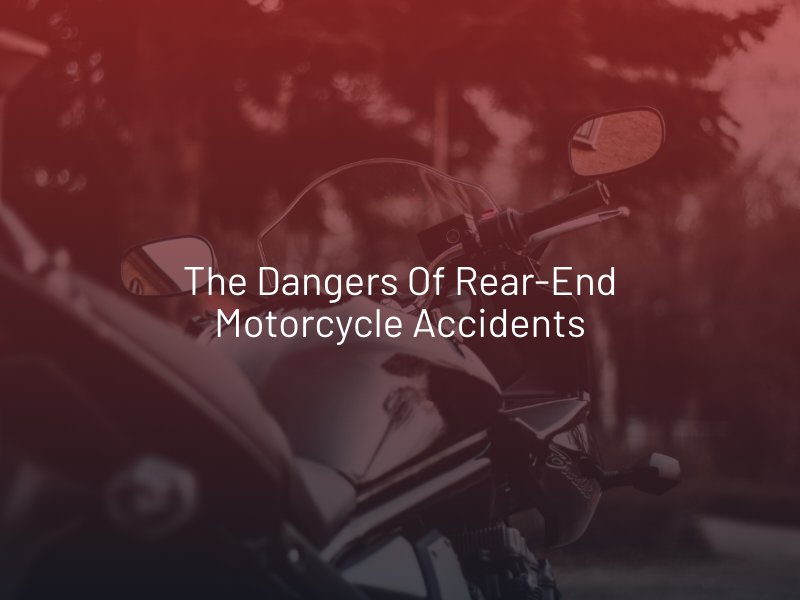The Dangers of Rear-End Motorcycle Accidents
Among the various types of motorcycle accidents, rear-end collisions pose a significant risk to riders. Due to the vulnerability of motorcyclists and the limited protection they have compared to occupants of larger vehicles, understanding the dangers of rear-end motorcycle accidents is crucial for both riders and other road users.

Limited Visibility and Awareness
One of the primary reasons rear-end motorcycle accidents occur is the limited visibility and awareness of motorcyclists by other drivers. Motorcycles are smaller in size and less conspicuous on the road, making them more prone to being overlooked. As a result, inattentive or distracted motorists may fail to notice a motorcyclist braking or changing lanes, leading to a rear-end collision. The result is often disastrous, as the impact from a larger vehicle can cause the motorcycle and its rider to be thrown forward, potentially resulting in life-altering injuries.
No Buffer Zone
In traditional rear-end collisions between larger vehicles, there is often a buffer zone between the occupants and the impact. A car or truck rear-end structure or trunk can absorb some of the forces and protect those inside. However, motorcyclists have no such buffer zone. With nothing to cushion the blow, the rider absorbs the full impact of the collision, leading to a higher likelihood of severe injuries.
Increased Risk of Whiplash and Traumatic Brain Injuries
Rear-end collisions can result in a rapid and forceful acceleration and deceleration, leading to a higher risk of whiplash injuries. The sudden jolt can cause the rider’s head to snap backward and forward, potentially resulting in neck strain, sprain, or even more severe spinal injuries. Traumatic brain injuries (TBIs) are also a grave concern in rear-end motorcycle accidents. When a motorcyclist is struck from behind, their head may collide with the vehicle ahead or the pavement, leading to concussions, skull fractures, or brain contusions. These injuries can have long-lasting consequences, impacting cognitive abilities, motor skills, and overall quality of life.
Multiple Vehicle Collisions
Rear-end motorcycle accidents can be further exacerbated by multiple vehicle collisions. When a motorcycle is rear-ended, it can be propelled into the vehicle ahead, increasing the potential for secondary impacts. This chain reaction can involve multiple vehicles and significantly increase the risk of injuries not only to the motorcyclist but also to other drivers and passengers.
Liability for Rear-End Motorcycle Accidents
In most cases, the driver who rear-ends a motorcycle is liable for the accident. This is because drivers have a duty to maintain a safe distance, follow traffic laws, and be attentive to their surroundings. Failing to do so and colliding with the rear of a motorcycle is often seen as negligence on the part of the driver. However, liability can vary depending on the circumstances of the collision. For example, if a road hazard or obstacle contributed to the accident, liability could potentially be shared with the entity responsible for maintaining the road. Therefore, determining liability in any accident, including rear-end motorcycle accidents, requires a thorough investigation of the facts, evidence, applicable laws and the help of a Las Vegas motorcycle accident attorney.